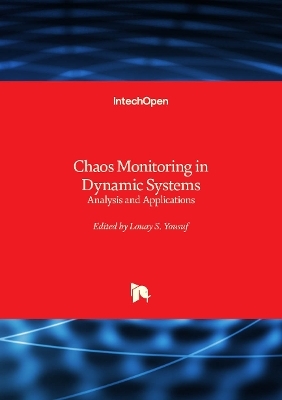
Chaos Monitoring in Dynamic Systems
Analysis and Applications
Seiten
2024
IntechOpen (Verlag)
978-1-80356-434-0 (ISBN)
IntechOpen (Verlag)
978-1-80356-434-0 (ISBN)
Chaos theory is an interdisciplinary area of scientific study and a branch of engineering focused on the law of dynamic systems. This book contains the method of chaos to detect the level of chaotic motion such as entropy, Lyapunov exponent, Poincare map, and phase-plane diagram.
Chaos theory is an interdisciplinary area of scientific study and a branch of engineering focused on the law of dynamic systems. Even very accurate measurements of the current state of a chaotic system become useless indicators of where the system will be. Many approaches to nonlinear dynamics such as the Fast Fourier Transform (FFT), phase-plane diagram, Poincaré map, bifurcation diagram, and Lyapunov exponent are used to detect and suppress the chaotic motion at different degrees of freedom. Chaos can help scientists explore the sudden transition from periodic motion to non-periodic motion at any dynamical system. There is a relationship between the finite element method and chaos analysis in which the dynamic quantity is increased with the increase of mesh generation. The refinement of element size in mesh generation affects the chaotic phenomenon Chaos theory has a wide variety of applications in engineering, such as robotics, and in medical fields, such as human gait locomotion. The dynamic description of the long-term behavior of any dynamical quantity is hard or impossible to predict. The three factors that affect chaos analysis are time delay, embedding dimensions, and the distribution of that dynamical quantity against time. Periodic, non-periodic motions, and chaos are used to describe the level of nonlinear dynamics. The vibrational signal of chaos might be continuous, discontinuous, solitons, and fractals. This book contains the method of chaos to detect the level of chaotic motion such as entropy, Lyapunov exponent, Poincare map, and phase-plane diagram.
Chaos theory is an interdisciplinary area of scientific study and a branch of engineering focused on the law of dynamic systems. Even very accurate measurements of the current state of a chaotic system become useless indicators of where the system will be. Many approaches to nonlinear dynamics such as the Fast Fourier Transform (FFT), phase-plane diagram, Poincaré map, bifurcation diagram, and Lyapunov exponent are used to detect and suppress the chaotic motion at different degrees of freedom. Chaos can help scientists explore the sudden transition from periodic motion to non-periodic motion at any dynamical system. There is a relationship between the finite element method and chaos analysis in which the dynamic quantity is increased with the increase of mesh generation. The refinement of element size in mesh generation affects the chaotic phenomenon Chaos theory has a wide variety of applications in engineering, such as robotics, and in medical fields, such as human gait locomotion. The dynamic description of the long-term behavior of any dynamical quantity is hard or impossible to predict. The three factors that affect chaos analysis are time delay, embedding dimensions, and the distribution of that dynamical quantity against time. Periodic, non-periodic motions, and chaos are used to describe the level of nonlinear dynamics. The vibrational signal of chaos might be continuous, discontinuous, solitons, and fractals. This book contains the method of chaos to detect the level of chaotic motion such as entropy, Lyapunov exponent, Poincare map, and phase-plane diagram.
| Erscheinungsdatum | 01.05.2024 |
|---|---|
| Verlagsort | London |
| Sprache | englisch |
| Maße | 178 x 254 mm |
| Themenwelt | Mathematik / Informatik ► Mathematik ► Analysis |
| ISBN-10 | 1-80356-434-2 / 1803564342 |
| ISBN-13 | 978-1-80356-434-0 / 9781803564340 |
| Zustand | Neuware |
| Haben Sie eine Frage zum Produkt? |
Mehr entdecken
aus dem Bereich
aus dem Bereich
Buch | Softcover (2024)
De Gruyter Oldenbourg (Verlag)
59,95 €


